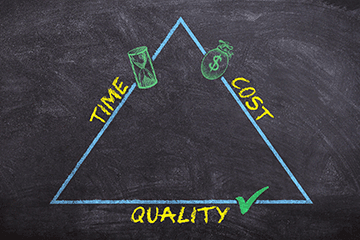
Tips for Organizing Website Content
by security in How To, Inspiration, Knowledgebase, Service on March 31, 2018Organizing website content effectively is crucial for providing a seamless user experience, helping visitors find what they’re looking for, and conveying your message clearly. Here are some tips to help you organize your website content:
- Understand Your Audience: Before organizing content, identify your target audience, their needs, preferences, and behaviors. Tailor your organization strategy to cater to their expectations.
- Clear Navigation Menu: Create a well-structured navigation menu that prominently displays essential sections or pages. Use descriptive labels and consider dropdown menus for subcategories.
- Logical Information Hierarchy: Organize content hierarchically. Place the most important information at the top, followed by supporting details. Use headings, subheadings, and bullet points to break up content and improve readability.
- Categorize Content: Group related content into categories or sections. This helps users quickly locate information and navigate to specific topics of interest.
- Use Descriptive URLs: Create user-friendly and descriptive URLs that provide an idea of the page’s content. Avoid lengthy, cryptic URLs.
- Search Functionality: Implement a search bar to allow users to find specific content quickly. Ensure that search results are relevant and accurate.
- Consistent Layout: Maintain a consistent layout and design throughout your website. Consistency in fonts, colors, and spacing creates a cohesive look and feel.
- Sitemap: Include an HTML sitemap for users to easily access all pages on your website. Additionally, submit an XML sitemap to search engines for better crawling and indexing.
- Content Prioritization: Highlight important or featured content using banners, callouts, or dedicated sections to draw attention.
- Whitespace and Visual Separation: Use whitespace to prevent content from feeling cluttered. Employ visual separation techniques like lines, boxes, or shading to distinguish different sections.
- Use of Images and Icons: Visual elements can aid navigation and make content more engaging. Use images, icons, and graphics to represent different categories or topics.
- Related Content and Cross-Linking: Within your content, include links to related articles or pages. This encourages users to explore more of your website and find additional relevant information.
- Breadcrumb Navigation: Breadcrumbs show users the path they’ve taken to arrive at a specific page. This helps users understand their location within your website’s structure.
- Archive and Pagination: For content-heavy websites, use pagination or archive pages to organize older content and prevent overwhelming users with too much information on a single page.
- Responsive Design: Ensure that your content organization works well on various devices and screen sizes. Use responsive design techniques to adapt layouts as needed.
- User Testing: Conduct usability testing to gather feedback from real users. Identify any confusion or issues they encounter while navigating your website and make improvements accordingly.
- Regular Content Audit: Periodically review and update your website’s content. Remove outdated or irrelevant information, and ensure that new content aligns with your organization strategy.
By implementing these tips, you can create a well-organized and user-friendly website that provides a positive experience for visitors, encourages engagement, and effectively communicates your message.


